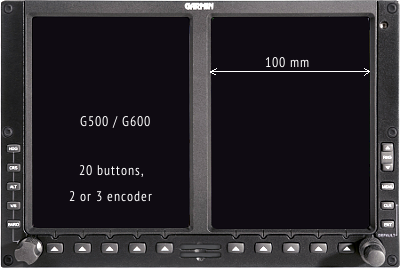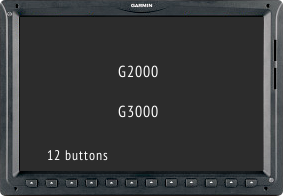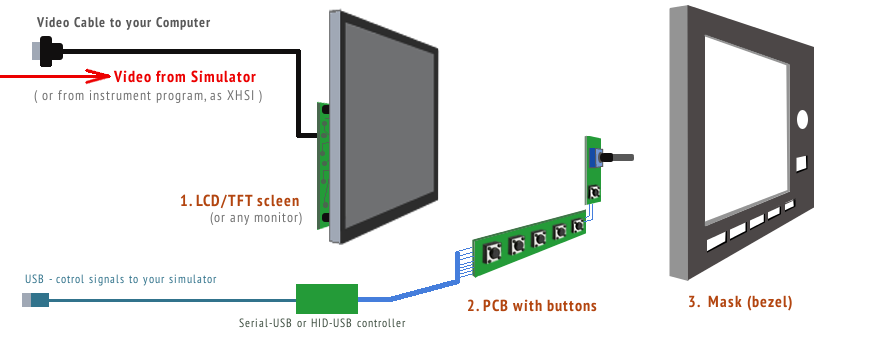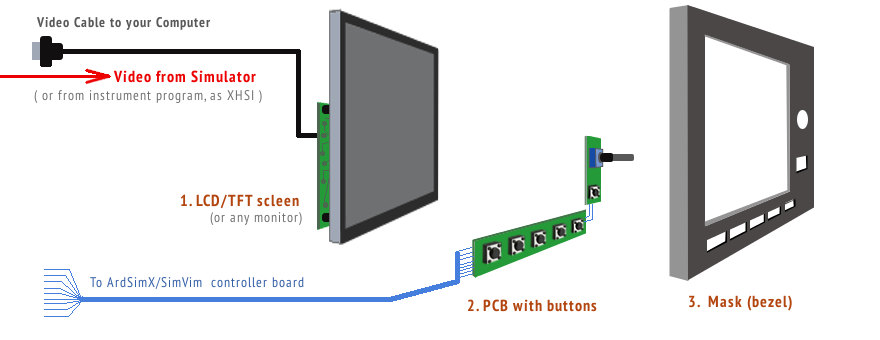As always, I want to inspire you to make the parts of your home cockpit by yourself. Because it is simple, quick and free.
You may be surprised, but making such a "complex" module as G1000 is one of the most simple things that you could make by hand for your cockpit!
Currently you can find a dozen of G1000 makers on the sim market that sell their products for price ranging from $600-800 to thousands. Actually, you can make your full-fledged home cockpit for the price of a tiny fraction of such devices cost.
Some of expensive Gxxx systems can be positioned as "professional, certified" devices for flight schools, but it can be true only if they have their proprietary software embedded in their "stand-alone" device, and they are not using the X-Plane's G1000/GPS graphic visuals as "drag-and-drop" screens. And some of them are proclaimed as suitable for "home cockpit builders" (for price of the real avionics)
Most other products are just bezels (more or less "realistic") with buttons and an integrated LCD screen that is used to display the original visual effects of the X-Planes G1000 (see below).
Some of them are molded from ABS plastic and can be indistinguishable from real Garmin, with all right corners radius, colors, texture, backlight, every millimeter is a piece of art (you can hang it on the wall and admire it, blowing off the dust, or you can use it as spare parts for your real G1000 mask in the plane when it is broken).
The others are more simple, have a flat bezel surface, or it's just a mask on the monitor, with or no backlight, made from plexiglass, but still can be very expensive ($400-1500)
Are you ready to pay for a simple piece of cheap plastic ??? You can estimate whether this is really affordable for you, and if it's worth to spend your money for few simple buttons and smooth surface. Even if you can find most simplified G1000 mask, it is still will be too expensive to use in your home cockpit.

Also, you can find at least one G500/G600 avionics replica for about $1000, it's also LCD screen with the bezel for displaying MFD/PFD using one of the known G600 program (note: the photo on the left is the real G500).
Some other devices such as GPS (430/530) bezels are sold for price of about $200 to $1000.
You can estimate is it really worth it, by just learning more about how all this works, You may be surprised! Read below about this.

Why does no one produce G2000/G3000 ? Maybe because it is much simplier, it is just a simple frame with 12 absolutely similar buttons? How can someone convince people that this is a "very complicated" and expensive device? No chance, you can ask: "C'mon, it's just a small monitor with a row of buttons!" And so it is, you are right!
Each hardware module for the simulator performs two functions - input control (switches, buttons, knobs) and data output (displays, indicators and pointers). And, in fact, such modules as G1000, GPS (430/530), EFIS and other "complex" modules that have a LCD screen for displaying information from the simulator, are the most simple devices do make!
They are even simpler to make than some of the switch/annunciator panels or an autopilot module! Why?
Those several buttons (and 2-4 encoders) are also doing nothing in the module itself.
All these control elements are used to send commands to your simulator, using one of these two methods of USB communication:
All buttons in such modules are usually connected to embedded Arduino board that have a small program to send the input commands to the simulator (plugin) using USB serial port. All communication is provided by X-Plane plugin.
(note: some of them have used our previous ArdSimX code embedded what was against our terms of use).
The buttons are connected to the HID controller (a small chip that you can find in your joystick) by standard HID device protocol.
So, as you can see, the structure of such device is very simple - it consists of only 3 parts: LCD display, small PCBs with a few buttons connected to some input controller (Arduino inside!), and cover (bezel, that actually can be cut out from any suitable material, even cardboard!).


As such, using SimVimX interface (right picture above) you can simply connect all buttons, switches, encoders to the controller with uploaded SimVimX firmware and configure them for any specific device with ease ( see the image maps for G1000 configuration here ).
Do not think that you need some "special" LCD for your PDF / MFD / EFIS / GPS. In fact, you can use any available LCD screen, even a very old LCD monitor that you can find for free in your house, or buy on "second-hand" market for $5 ... $50.
You can use one wide (32") monitor LCD and place two plastic bezels over it, having 2 G1000 modules displayed on this one screen.
Personally, I don't understand why home cockpit builder would need to have his Gxxx avionics to be a "detachable / standalone" modules. When you are building you own cockpit in your home for a specific plane you don't need it to be modular to carry it, it's unlikely you have several cockpits in your home that need these modules moved here and there. If you have, it is still much convenient and cheaper to make all stationary (as fixed bezels for every panel).
Well, maybe someone would think - "oh, if I can build this for myself, so, I can build more and start selling"? Of course if you can build a good looking and cheap bezels with few buttons, why not? It depends on what you really want to do - build and fly, or compete with many other similar bezel sellers.
1. If you absolutely want to make it as "module" you can find and buy the LCD screen or small monitor that exactly (+/-) fits your module screen size. It can cost you from 30 to 150 $$.
Here are some examples:
Buttons (total cost $2-5)
Encoders (total cost $5-20)
LCD screen (old monitor LCD - $20-30)